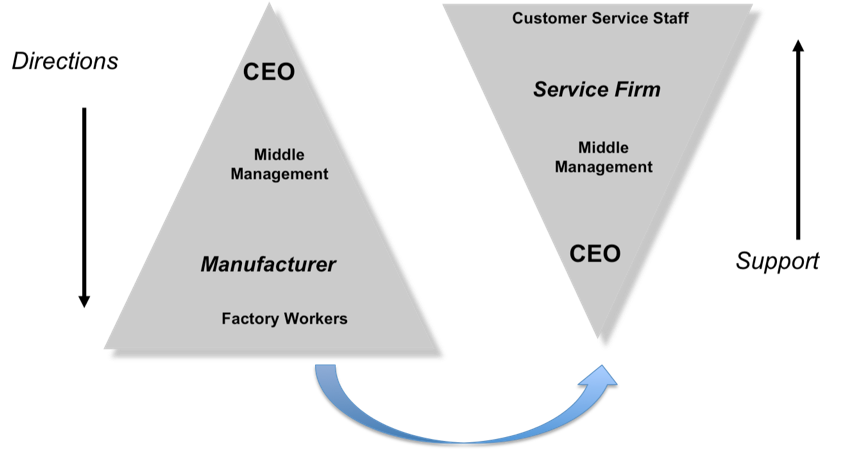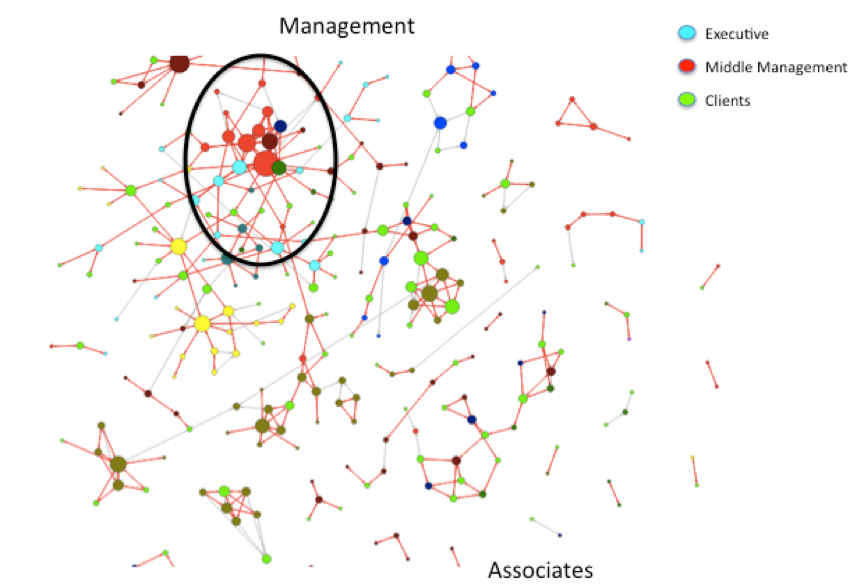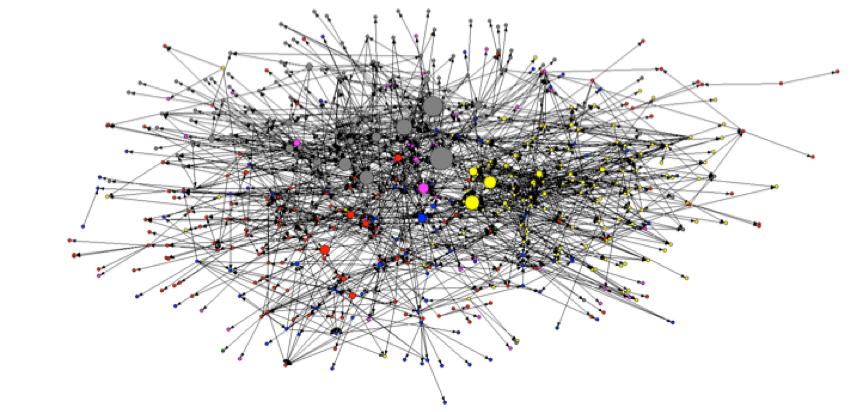Leading from the Bottom
We have been long term advocates of J.B. Quinn’s inverted hierarchy model for new service led economies.
Inverted Hierarchy
Essentially, Quinn’s argument was that the vast majority of jobs in the developed world (around 80%) are now service oriented and competitive advantage now comes from having ‘best in class’ competencies. His inverted hierarchy emphasises the need for line management to “support”, rather than “direct” front line staff in services organisations. Since its publication in the 1980s there has been a plethora of supporting voices from all quarters. The Deloitte’s led study “The Big Shift”; and book on “The Power of Pull”; the MIT management think tank on “Leaders Everywhere”; Steve Denning’s book “Radical Leadership”; plus numerous HBR and McKinsey articles all imploring the same message, get rid of the bureaucracy, flatten the organisation, and empower the front line staff. Easier said than done?
Try as we might the management hierarchy, with its military heritage adopted by industry in the last century, has been a hard one to shake. Over a decade and a half of Social Network Analysis (SNA) studies has highlighted to us just how embedded this model is within organisations, though clearly the degree of hierarchical compliance does vary significantly across industries. A network model of a well functioning hierarchy will show cohesive networks at the executive level. The cohesive groups will then fragment as you move down through the levels of the organisation chart. At the base of the chart you will see shop floor level teams only connected through higher levels in the hierarchy.
Networks at each hierarchical level
Of course in an industrial age, where the workforce was largely engaged in manufacturing or producing widgets, this form of work organisation has stood the test of time in terms of efficiency and low cost production. The situation changes when those passive widgets become active and opinion fuelled customers! As aware as we are how can we enact change to the inverted hierarchy?
Barriers to Change
Rather than going straight to solution mode it is worth reflecting first on the nature of the barriers that we are faced with:
Your organisational remuneration systems are likely to be strongly biased to the levels in the hierarchy, hence there is a vested interest for those at the top to maintain the status quo.
Those part-way up the hierarchy have developed long term strategies as to how they can climb that hierarchy and have little interest in disrupting the status quo.
Those at the base of the hierarchy have learnt that to progress up the hierarchy one must first learn to do what your line manager boss wants, hence reinforcing the hierarchy.
For many nationalities the management hierarchy is embedded in their cultures. Asian cultures in particular have ‘respect for your elders’ and ‘respect for your leaders’ built in, even if sometimes that respect is not implicit, it is usually explicit.
Even office or workplace designs reinforce the hierarchy. The default design is to co-locate those according to the organization chart. Though some forward thinking organisations are now challenging this by looking to engineer innovation and developing serendipitous connections through judicious physical space design.
There have been several sources of suggestions for facilitating the required changes. For example, leadership guru Steve Denning in his book on radical management suggests:
- A shift in goals from making money for shareholders to delighting customers through continuous innovation.
- A shift in the role of managers from controlling individuals to enabling self-organising teams.
- A shift in the way work is coordinated from bureaucracy to dynamic linking.
- A shift in values from a preoccupation with efficiency to a broader set of values that will foster continuous innovation.
- A shift in communications from top-down commands to horizontal communications.
Gary Hamel in his writings on “Leaders Everywhere” suggests:
- Too much is required by too few people on top — change is belated, infrequent, convulsive, i.e. by the time the top realises that a change is needed, it’s too late.
- Instead of continuing to ask more and more of the top leaders, we should move responsibility and expertise downwards.
- We already realise that value is created by the associates (note: most don’t call them employees any longer), e.g. by interacting with clients, we talk about co-creation with clients.
- One of the next important steps, after 360-feedback, is 360-compensation that gets rid of the rigid, hierarchical structure of compensation, but attributes compensation more fairly to where it is created.
Authors of the “Power of Pull”, John Hagel, John Seeley Brown and Lang Davison address the issue of client engagement (the pull) with these suggestions:
- Choosing environments that increase our likelihood of encountering people who share our passions; becoming and staying visible to the people who matter most.
- Influencing their endeavors so they amplify our own work.
- Discovering and interacting with the right people at the right time (timeliness).
- Making the most of every serendipitous encounter (relevance).
Along the same lines MIT professor Thomas J Allen, the inventor of the ‘Allen Curve’ which articulates the level of drop off in communications with spatial separation, with co-author Gunter Henn, find that levels of physical co-location predicts the level of electronic communication. In their book the Organization and Architecture of Innovation, they make the compelling point that non-collocated teams that share an organizational membership will suffer some loss of intra-departmental communication, but this would be more than offset by increased inter-departmental communication with co-located members of other departments, which would be virtually non-existent without that co-location. The increasing availability of electronic communication facilities has no or little effect on this. So their suggestions could be summarised as:
- For staff involved in tasks requiring complex communications, co-location is essential.
- For staff tasked with coordinating others, co-location is not critical
- Where organizations are looking to build a diversity of interactions (like the base of the service pyramid) the tradeoff between intra-departmental vs inter-departmental communication, in deciding on who sits near who, is well worthwhile.
Orchestrating Change through Networks
For our part we believe that the value that SNA can add is the ability to provide specificity to these general recommendations. By providing targeted areas for action, the effects are likely to be felt in the shorter term, providing a stronger catalyst for change. For example, in addressing Denning’s recommendations, SNA can provide a baseline as to how the current organisation is working. What are the current levels of bureaucracy? Is it uniform or are some areas more bureaucratic than others? Which areas are likely to be engaging in innovative co-creation activities with clients? Is this happening at the service interface or at higher levels in the hierarchy? How are customers being engaged at each level of the hierarchy? How is client intelligence being vertically integrated up and down the hierarchy?
Reciprocated Relationship Network Map
The above map is filtered to show predominantly reciprocated relationships to accentuate the relationship patterns. One can see how the management layers are closely clustered with a selection of clients. At another level we can see many associate-client disconnected clusters. The opportunity exists for the management to facilitate peer connections between these disconnected clusters to achieve a broader base of client connection, without the need to introduce bureaucratic overheads.
In addressing Gary Hamel’s suggestions, SNA can assess how much appreciation the management layers have on the value being generated at the client interfaces. We regularly find that in hierarchical organisations dependency nominations rarely point downwards i.e. managers tend not to acknowledge their dependency on their own staff, but will freely nominate ‘up and out’. In the Hamel scenario we would see many more reciprocated nominations. SNA is often compared with 360 deg reviews. When asked a question like “who helps you most in getting your job done well”?” Those staff nominated the most would qualify for higher remunerations according to Hamel. SNA can identify these ‘most valued’ staff precisely.
In terms of efficiency we had already indicated that the dependency relationships invariably point upward, rather than the other way. As Hamel indicates, this causes a logjam at the top, with many organisations paralysed while waiting for management responses. Many of the executives we work with have despaired at what they see as their staff’s inability to be accountable and to resolve peer level issues amongst themselves, rather than relying on the line management to make a call on any little dispute. We shouldn’t be surprised as hierarchies are designed this way. Unfortunately with growing interdependence between job roles the call on managers to adjudicate disputes is growing with it. What we need to see and encourage is natural ‘leaders without authority’. These are the influencers and ‘can do’ staff who can influence others through their powers of persuasion, rather than through the power of position. They are able to successfully negotiate outcomes through co-operation and collaboration. We have found that the ‘key players’ identified by the SNA are, more often than not, these types of people.
Natural Leaders
In the above map we have identified those that are not part of the line management, yet have attracted several peer dependency nominations, which are often reciprocated (red lines).
In the “Power of Pull” much is made of being able to quickly identify the people you should be collaborating with, independent of a formal structure. An ‘industrial era’ response to these needs would be to build a skills or ‘yellow pages’ directory where everyone’s skills and experiences could be catalogued and freely searched. These efforts have largely been miserable failures. For several organisations we have been able to fill this gap by using the key players identified in the SNA as connection brokers. Rather than building expensive directories that become out of date before they are published, the SNA identified brokers who are organised to respond to people search enquires, by doing what they do naturally. And that is to provide qualified referrals, meaning that the right connections are being made in the fastest possible time.
Networked “Yellow Pages”
The “Power of Pull” also identifies the importance of serendipitous connections or relevance. In SNA terminology these are called ‘weak ties’, made famous by Mark Granovetter’s “Strength of Weak Ties” theory. Granovetter’s research identified that someone looking for a new job is much more likely to be successful by working through people that they might only know peripherally, rather than working through their closest connections. The logic is that your weak tie network provides a far broader search potential than your close ties, whose connections you are likely to be already connected to. SNA can explore your ‘weak tie’ network, identifying those that are best positioned to broker connections to the largest number of relevant connections.
Weak Ties Network
The above map identified only those connections that were nominated as ‘minor’ and therefore representing this organisation’s ‘weak tie’ network. The nodes were sized by a ‘betweenness’ metric, which identifies those best positioned to broker connections between diverse groups. Interestingly the most dominant grouping (coloured ‘grey) were viewed as somewhat peripheral in comparison to the core groups. Our advice to the management was to make them aware of the potential role these ‘brokers’ could play in triggering breakthrough innovation.
Finally lets address the Thomas Allen’s research and the powerful influence physical proximity has on connectivity and collaboration. This topic is addressed in more detail in Workplace Space and Connectedness, but for this article we highlight how SNA can overlay physical location attributes onto the social network analysis maps to identify just how powerful this impact might be in any given workplace. To ‘engineer serendipity’ we basically need to change where people sit. In doing this however, we don’t want to destroy existing teams. Using SNA we can clearly identify those teams showing the strongest density of internal connections. It is these teams that are mostly susceptible to the negative aspects of group think and therefore would benefit most from a more diverse suite of connections. They are also the teams least likely to be damaged by physical separation, as the existing trust links will ensure continued collaboration, independent of physical location.
Networks across Physical Space
The above map identifies the connectivity patterns across physical work areas (identified by a Floor/Area code). In this case we can see the organisation has allocated the physical space according to the organisational structure (as per the colour of the circles). The connectivity patterns identify the ‘traffic pattern’ of connectivity across the physical space. The cohesiveness of the existing teams can also be seen, providing a choice for those teams that could be physically separated for ‘engineered serendipity’ purposes.
Summing up
There are many arguments for inverting the management hierarchy in order to thrive in today’s economy. It is however, easier said than done, with many structural mechanisms working to reinforce rather than dismantle it.We have identified a number of ways SNA can facilitate this challenging task:
Identifying how clients are actually being engaged with at all levels of the organisation. Visually identifying where bureaucratic processes are impacting performance.
Identifying who the ‘key players’ in the organisation are, being those identified through 360 degree nominations. Rewards and acknowledgement of these key players can change behaviours.
Identifying the ‘leaders without authority’. These are the people at the bottom of the hierarchy who through their powers of influence and persuasion can lead the way from the bottom.
Use the identified key players as connection brokers. In this way ensuring that the right connections can be made at the right time, without the overhead of bureaucratic systems.
Build the reach across the organisation through identified brokers in the ‘weak tie’ network, as a more effective alternative to relying on the formal hierarchy.
Identify the most cohesive teams as those who would benefit most from an injection of diverse connections through co-location. They would also suffer least from not being physically co-located.








